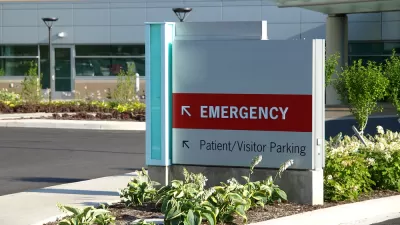All but 10% of the CBR went to Southern California refineries, though Bay Area shipments grew by 57% and provoked the largest outcry. The Northern California deliveries are mostly from North Dakota, with 12.5% from Colorado.
Thanks to rail, crude from North Dakota's Bakken field, estimated at one million barrels daily, now makes it to both coasts. While California deliveries may not yet match what goes to the Port of Albany, N.Y and the Philadelphia Energy Solutions refinery, it's growing rapidly to the dismay of many in the Bay Area.
"Northern California volume of crude by rail increased 57 percent during 2013, from 74,332 barrels in January to 116,657 barrels in December, according to California Energy Commission statistics. But the bulk of the increase statewide went to Southern California refineries, as total state volume spiked from 155,841 barrels in January to 1,180,662 barrels in December. Only about one tenth of all crude-by-rail imports came to Northern California," writes Robert Rogers.
The California spike is particularly notable when compared to the total increase in CBR shipments last year of 83%. However, that figure refers to carloads, not barrels.
Local agencies and even the state may not be able to do much because the regulation of "rail cargo is typically covered by federal interstate commerce laws," Rogers adds.
"While most railroad safety regulations are under federal purview, Gov. (Jerry) Brown's administration proposed a significant strengthening of the state's ability to respond to emergency oil spills in the January 2014 budget," California Energy Commission spokeswoman Teresa Schilling wrote in an email.
However, as dangerous to communities as these oil trains carrying North Dakota's volatile oil may be, there is an upside, environmentally speaking.
"On the one hand, this (Bakken) crude requires less energy to refine and may have less emissions," Contra Costa Supervisor John Gioia said. "On the other hand, it has a lower flash point and so is potentially more flammable and explosive, which raises safety concerns."
FULL STORY: Huge increase in crude oil by rail to Bay Area concerns local leaders

Alabama: Trump Terminates Settlements for Black Communities Harmed By Raw Sewage
Trump deemed the landmark civil rights agreement “illegal DEI and environmental justice policy.”

Study: Maui’s Plan to Convert Vacation Rentals to Long-Term Housing Could Cause Nearly $1 Billion Economic Loss
The plan would reduce visitor accommodation by 25% resulting in 1,900 jobs lost.

Why Should We Subsidize Public Transportation?
Many public transit agencies face financial stress due to rising costs, declining fare revenue, and declining subsidies. Transit advocates must provide a strong business case for increasing public transit funding.

Paris Bike Boom Leads to Steep Drop in Air Pollution
The French city’s air quality has improved dramatically in the past 20 years, coinciding with a growth in cycling.

Why Housing Costs More to Build in California Than in Texas
Hard costs like labor and materials combined with ‘soft’ costs such as permitting make building in the San Francisco Bay Area almost three times as costly as in Texas cities.

San Diego County Sees a Rise in Urban Coyotes
San Diego County experiences a rise in urban coyotes, as sightings become prevalent throughout its urban neighbourhoods and surrounding areas.
Urban Design for Planners 1: Software Tools
This six-course series explores essential urban design concepts using open source software and equips planners with the tools they need to participate fully in the urban design process.
Planning for Universal Design
Learn the tools for implementing Universal Design in planning regulations.
Smith Gee Studio
Alamo Area Metropolitan Planning Organization
City of Santa Clarita
Institute for Housing and Urban Development Studies (IHS)
City of Grandview
Harvard GSD Executive Education
Toledo-Lucas County Plan Commissions
Salt Lake City
NYU Wagner Graduate School of Public Service



























